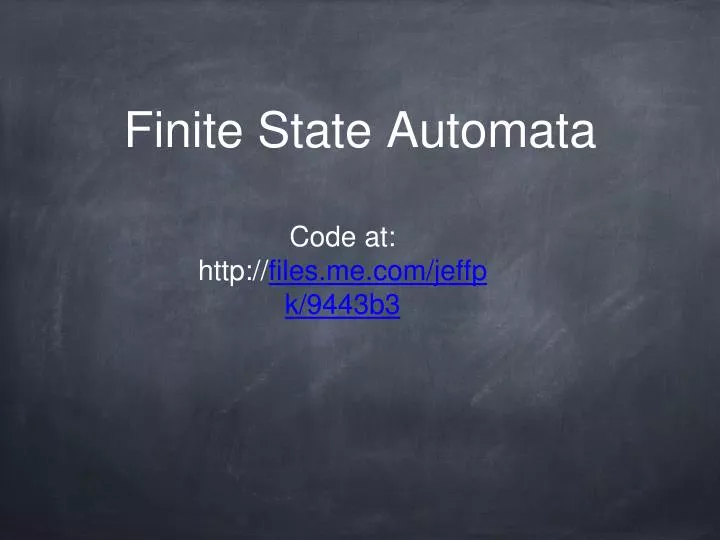
To get a more clear understanding of them read and take a look at the diagrams in this article ( original broken link). Each FST runs across the tape once and output to another tape once. As you can see, each state is only activated if there is a link to it whose input condition was correct, passes the remaining input to the next state, and writes to a separate output tape. This would get activated, set the output tape to just b, and pass the remaining bc to state 2. A link to state 2 matches a and changes that to b. A link is "activated" when its input condition is correct and then gives then next state the adjusted tape.įor example let's say an FST starts with the tape abc at state 1. The entire FST is represented by a set of states and links between them. A tape is essentially a set of inputs like characters in a string. In as simple terms as possible, I understand that an FST is essentially a "thing" that moves from one state to the next based on an input tape and writes to a different output tape. FSTs can be built by a variety of tools that accept an extended regular expression syntax.

All the FSTs were combined into a single one using an FST compiler, which produced a single FST that was much smaller than the sum of its parts and ran very fast. I also had an FST for the verb "to be", which would turn "is" into "be+PRESENT+3rd" (3rd person), and similarly for other irregular verbs. My main FST for verbs would turn a regular verb, say "walked", into "walk+PAST". FSTs can do parsing of regular languages into strings in linear time.Īs an example, I once implemented morphological parsing as a bunch of FSTs.

The FST starts out in a designated start state and jumps to different states depending on the input, while producing output according to its transition table.įSTs are useful in NLP and speech recognition because they have nice algebraic properties, most notably that they can be freely combined (form an algebra) under composition, which implements relational composition on regular relations (think of this as non-deterministic function composition) while staying very compact. pattern matching).Īn FST consists of a finite number of states which are linked by transitions labeled with an input/output pair. This chapter presents the basic concepts of image processing using FSMs (finite-state machines), lists many specific image-processing operations which have been implemented with FSMs, gives examples of several typical operations (along with the C-code used to implement them), outlines a completely routine procedure for generating and optimizing SKIPSM C-code for a large class of image operations and neighbourhood sizes, and concludes with some execution-speed comparisons which support the claims of fast execution.A finite state transducer (FST) is a finite state automaton (FSA, FA) which produces output as well as reading input, which means it is useful for parsing (while a "bare" FSA can only be used for recognizing, i.e.

The resulting implementations are almost always faster, and sometimes much faster, than the same operations implemented in conventional ways on the same computational platforms.

Note that “Separated” here does NOT imply that the operations must be linearly separable. In search, we simply need to start from the first state of the automata and the first character of the text. Once the FA is built, the searching is simple. Construction of the FA is the main tricky part of this algorithm. These techniques, taken together, have been given the acronym SKIPSM (Separated Kernel Image Processing using finite-State Machines). In FA based algorithm, we preprocess the pattern and build a 2D array that represents a Finite Automata.
#Finite state automata and image recognition series
In a series of papers starting in 1994, Waltz described a powerful and unconventional method of implementing many important neighbourhood image processing operations.


 0 kommentar(er)
0 kommentar(er)
